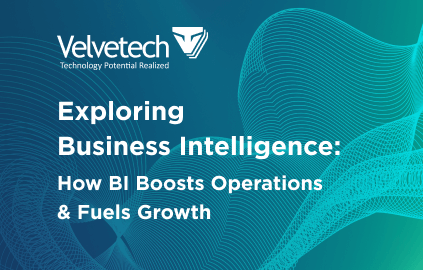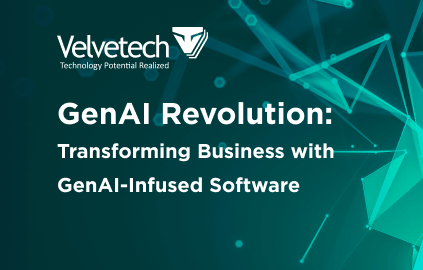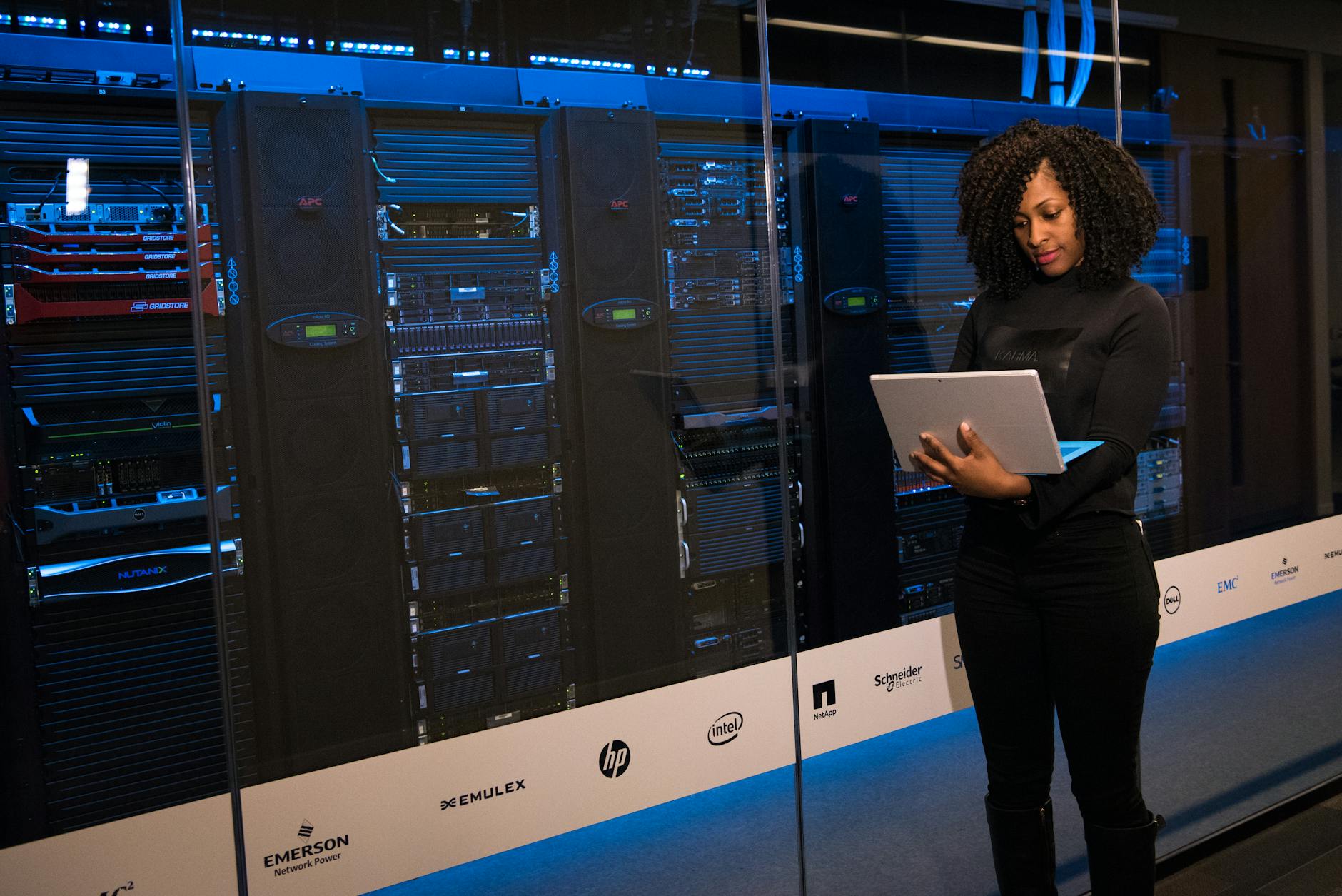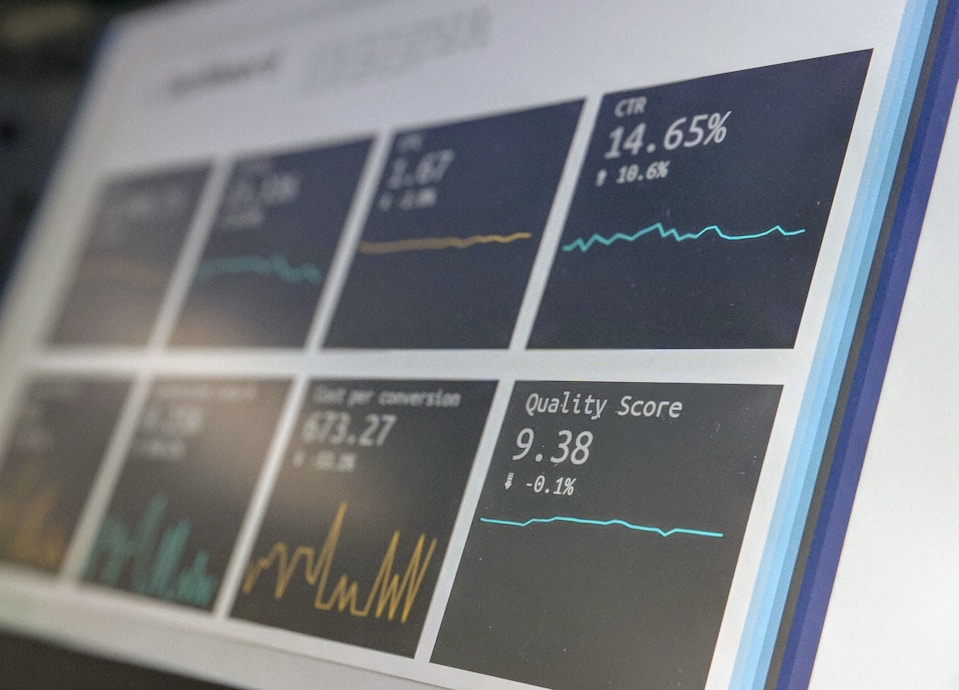Imagine a retail company that has mastered the art of managing sales seamlessly, providing exceptional customer service, and staying at the forefront of innovation. The company has gained a significant competitive advantage, all thanks to a perfectly crafted marketing strategy and clever merchandise management.
This is a vivid example of a successful retail business. And guess who is acting behind the scenes? If your answer is business intelligence (BI), then you are quite right. You see, the retail business needs a helping hand as it’s becoming increasingly competitive.
According to Statista, worldwide retail sales will be around 32.8 trillion US dollars by 2026. Hence, to drive success in this competitive market, you should definitely leverage data and do it accurately.
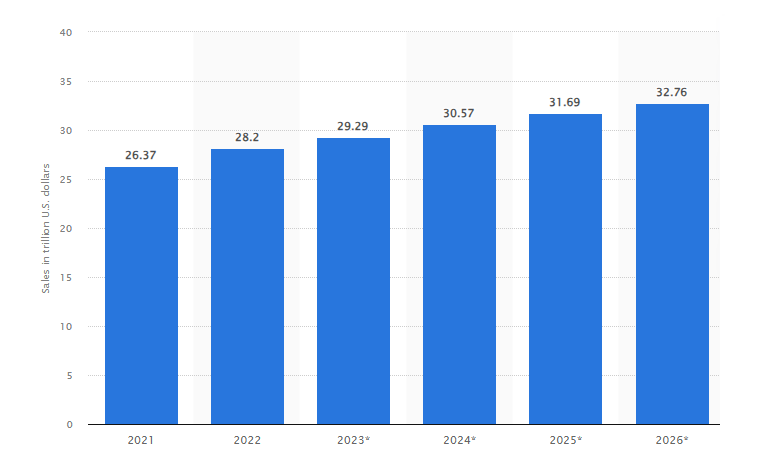
In this article, we will help you grasp the groundwork on how retail BI can empower your business to achieve its common goals. In particular, we will focus on the following aspects:
- Importance of retail business intelligence
- Key benefits to reap
- Top challenges to navigate
- Best practices to follow
- Successful use cases to get motivated
- Best tools to utilize
- Cutting-edge trends to keep an eye on
The Pivotal Role of Business Intelligence in the Retail Industry

If you operate in the commercial industry, then you likely come across numerous discussions about the role of retail business intelligence. However, let’s have a quick recap to remember its main point.
At its core, business intelligence systems play a vital role in the retail industry, empowering retailers to optimize operations, enhance customer experiences, and drive profitability. All this is possible thanks to a set of technologies and tools that help organizations collect, integrate, analyze, and present retail data.
When paired with the robust retail software, BI can help you swiftly adapt to market changes, identify sales trends, predict stock shortages, make timely decisions, and much more. As you can see, there’s no lack of benefits that BI can equip your retail business with. So let’s talk about them in more detail.
Core Advantages Business Intelligence Gives to the Retail Industry
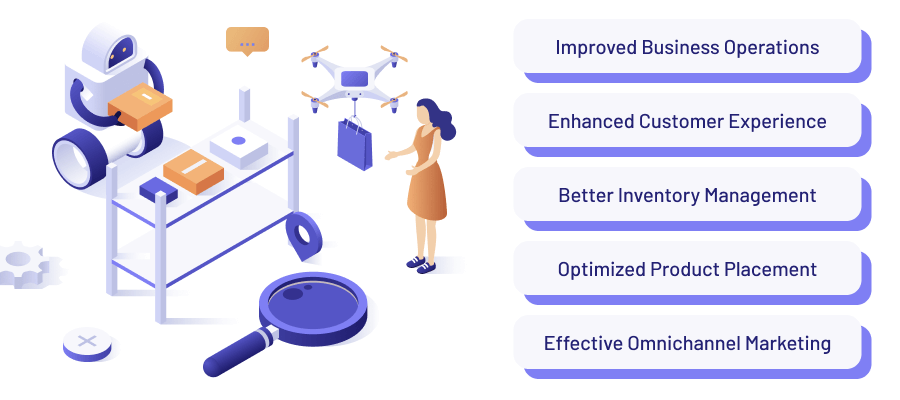
The advantages of business intelligence in the retail industry are significant. Increasing customer satisfaction, boosting buyer retention, and uncovering market trends are just a few pros you can get with the right BI solution in hand. Curious to see what else this approach can present? Let’s explore the core benefits together.
1. Improved Business Operations
Streamlining business operations is often linked to optimizing resources, improving business performance, and reducing waste. Typically, BI tools can help in achieving the above objectives. By employing the right tools, you can identify bottlenecks, inefficiencies, and areas for improvement.
For example, BI solutions can significantly contribute to business process automation, allowing for faster and more accurate outcomes, which improves operations.
Let’s picture that your company often grapples with delivery delays. To promptly resolve the issues, you can analyze historical data and pinpoint the root reasons for these delays. As a result, you can optimize logistics and significantly improve delivery times.
BI for Business
Find out the secrets of how business intelligence boosts operations and what BI tools and practices drive data analysis.
2. Enhanced Customer Experience
When it comes to retaining customers and increasing brand loyalty, boosting customer satisfaction comes into play. In order to offer customers appropriate products or services, it is important to understand their needs. Business intelligence solutions can help retail companies in defining the preferences of their audience and providing personalized offerings.
BI tools may also assist in identifying and targeting potential buyers. With the right data in hand, retailers can get insights on how customers interact with goods, what platform they use, how much time they spend on shopping, etc. Overall, it will lead to more personalized marketing, which will boost customer satisfaction and loyalty.
Gaining Control of Customer Engagements
What if every customer could deal with your single most effective sales or service person?
3. Better Inventory Management
Typically, retailers deal with an array of inventory challenges, from inefficient item tracking to the difficulties of overstocking. Fortunately, there are a variety of robust business intelligence solutions for retail enterprises to help overcome the above issues.
BI solutions can assist in optimizing stock levels, reducing extra inventory expenses, and accelerating order processing. For instance, utilizing AI-powered BI tools like Azure Machine Learning or IBM Watson Analytics provides the capability to predict demand for particular products based on historical data, seasonal trends, and market variables. This foresight empowers merchants to efficiently plan their inventory and avoid the risk of overstocking.
Explore how Inventory Management Software Can Double Task Efficiency
4. Optimized Product Placement
The benefits of business intelligence in the retail sector go far beyond offering personalized products and improving the customer experience. If you have an in-house store, then you can leverage BI solutions to streamline product search for customers, making the shopping experience more convenient and enjoyable.
For example, with the help of Microsoft Power BI, it is possible to analyze customer behavior and preferences to create interactive dashboards that display customer foot traffic, popular product categories, and buying trends. This aids in making informed decisions about floor layouts and product placements.
Learn more about Advanced Techniques of Retail Data Analytics
Consequently, optimizing store designs will empower you to arrange products for maximum visibility and accessibility. This, in turn, will provide a retail environment that adheres to your consumer wants and preferences.
5. Effective Omnichannel Marketing
Let’s admit that the term “omnichannel” seems hip and trendy in the realm of marketing. As a quick side note, it is a customer-centric approach in which all communication channels are integrated, whether physical stores, apps, or websites.
To enhance marketing strategies, it is vital to effectively collect and analyze data. Here BI tools kick in. They help you gain valuable information about consumer behavior, preferences, purchase patterns, and much more. With these insights in hand, retailers can customize marketing efforts to meet the demands and desires of their target audience.
Avoiding Common Pitfalls When Implementing BI in Retail
Building a robust retail business intelligence solution is not an easy endeavor. There are many challenges you should navigate along the way. Here are the most common pitfalls to take into consideration in order to successfully leverage BI technologies in your retail sector.
1. Data Quality and Accuracy

Given the vast amount of data generated in retail, from sales transactions to customer behaviors, maintaining data accuracy and consistency becomes a challenging task.
Merchants may often have disparate data sources and formats. So, to get reliable insights, it is crucial to ensure the quality and reliability of the data. You can achieve it by creating a centralized database, standardizing the data entry process, merging duplicate data, and conducting data audits regularly.
Discover the Key Steps to Build a Solid BI Architecture
2. Data Privacy and Security

Another common challenge that retailers encounter is ensuring robust data privacy and security. Companies handle a large amount of customer personal and financial information, and this data can become an attractive target for cyberattacks.
To prevent security breaches and data theft, it is worth establishing strong security measures. One effective approach is to deploy access control. This involves implementing role-based access that ensures that users only can work with the data and systems essential for their roles.
To add an extra layer of security, you can also implement two-factor authentication. It is also possible to implement biometric authentication, verifying users through fingerprints, voices, or facial features.
3. Complexity of Tools
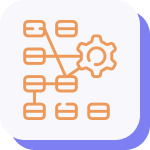
Depending on your specific needs in retail analytics, you can use different business intelligence tools. However, many of them may require specialized knowledge to be effectively configured and customized.
One way of dealing with this issue is turning to a skilled BI team that has expertise in implementing BI technologies. It will save you time and effort while tailoring the right tools to your unique situation.
Another way out is prioritizing user-friendly business intelligence solutions for your retail analytics. They will allow you to empower your employees and simply derive meaningful insights.
For example, you can consider intuitive tools like Microsoft Power BI or Tableau Public, which can help users independently extract valuable insights from data. These tools frequently offer pre-built templates, making it possible to not only quickly generate information but also create interactive reports.
4. Data Overload

As we have already mentioned, retail businesses produce a lot of data. Hence, for retail business intelligence software, it can be challenging to effectively manage and analyze such a large quantity of information. Nevertheless, there are some simple steps that can help you escape from this problem.
For example, you can regularly clean irreplaceable and old data and update the database. With a structured and updated dataset, your BI system will operate optimally. As a result, you may gain valuable insights and make well-informed decisions.
Explore Top BI Challenges and the Ways to Handle Them
Best Practices for Leveraging BI in Retail
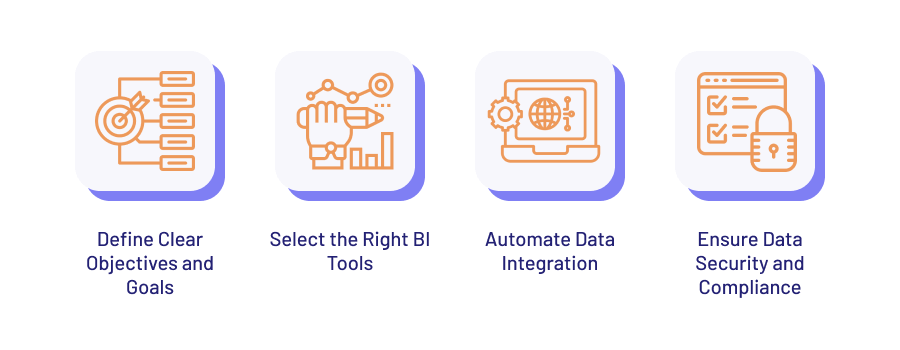
To utilize suitable business intelligence software aligned with your retail requirements, it is better to adhere to some best practices. We suggest following these simple yet important steps to implement an appropriate solution.
Define Clear Objectives and Goals
To develop a robust solution, begin by clearly outlining the objectives you aim to achieve using business intelligence. For example, your purpose can be to enhance sales, optimize inventory, or improve the customer experience. Or even all at once.
Select the Right BI Tools
Once you have defined your main objectives, you can choose appropriate BI tools. Knowing what features you need will streamline the selection process from the diverse range of offerings in the BI landscape. Additionally, consider the scalability, user-friendliness, and integration capabilities of the tool, as well as its alignment with your budget.
We’ll talk about the BI software options in one of the upcoming chapters.
Automate Data Integration
As you collect vast amounts of data from various sources, you need effective integration, otherwise this data remains siloed and fragmented. To streamline your data integration process, it is worth considering data automation. It can minimize human errors, streamline data preparation, and facilitate access to real-time analytics.
Learn more how to Stay Ahead of Competitors Through Data Automation
Ensure Data Security and Compliance
You know, of course, that it is important to implement robust security measures to safeguard sensitive customer and business information. Previously, we talked a bit about how you can achieve this. You also need to adhere to the applicable regulations of your industry.
For example, you may need to comply with data privacy regulations like the California Consumer Privacy Act (CCPA) and the General Data Protection Regulation (GDPR). They will help you better meet data privacy laws, depending on the location.
Use Cases of BI in the Retail Industry
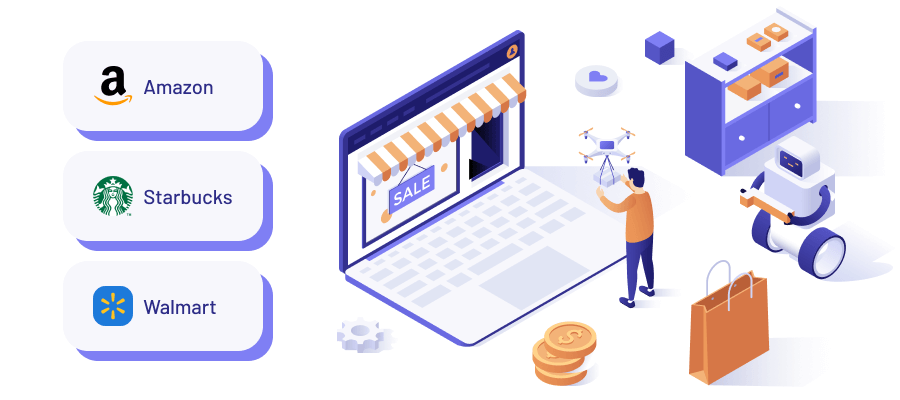
By now, you know the fundamental steps to successfully integrate business intelligence into your retail solutions. To help you understand better how it can work in practice, let’s have a look at some prominent business intelligence case studies in the retail industry. They highlight how data-driven insights and analytics can boost growth for businesses in this sector.
- Amazon. BI tools are integrated into almost every step of Amazon’s supply chain, from offering personalized product recommendations to making logistic decisions. That is one of the key reasons why Amazon is one of the leading companies in the retail industry.
- Starbucks. By successfully utilizing business intelligence tools, Starbucks has robust retail software that predicts what customers might like to buy. Each time offering clients something they truly desire, Starbucks not only increases sales but also fosters customer loyalty, keeping them coming back.
- Walmart. As for Walmart, it uses BI tools to track and analyze customer online behavior. In particular, they examine the most frequently searched products, items added to shopping carts, and purchases made on the same day. The company also monitors its website and app to find out which platform customers prefer for shopping.
Top BI Platforms for the Retail Industry
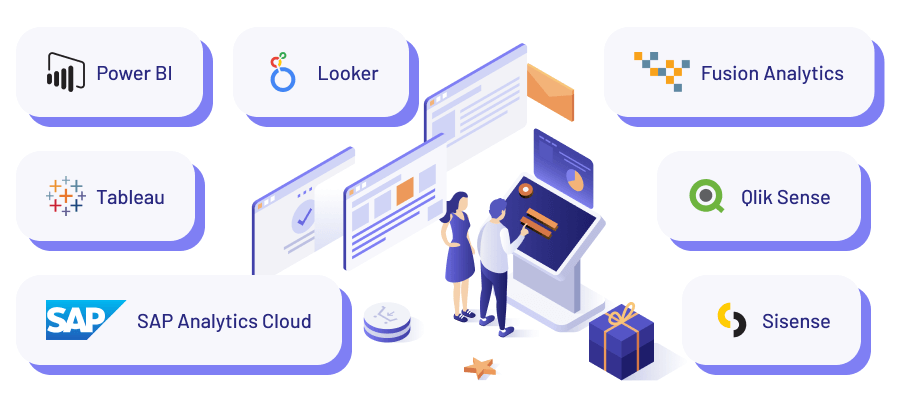
We have covered a lot of ground about the importance of employing appropriate BI software for your business. There is a wide range of tools available on the market that you can leverage, though choosing the right one can be a bit confusing.
So, here are some cutting-edge business intelligence software options that come with user-friendly interfaces and are simple to utilize in the retail industry:
- Power BI
- Tableau
- Qlik Sense
- Looker
- SAP Analytics Cloud
- Sisense
- Fusion Analytics
By employing these tools, you can benefit from features like data integration and transformation, advanced analytics and AI, or natural language querying. These software solutions will also equip you with advanced data visualization, real-time data analytics, and more.
All the above tools come with mobile apps, so you can work with data on the go or from any location. As for the pricing, you can find the one matching your budget — luckily, there’s a great variety of subscription models.
Innovative Trends in Retail Business Intelligence
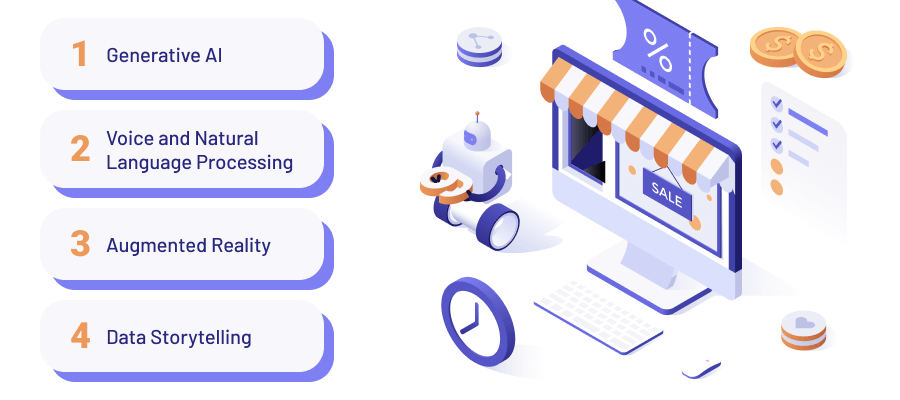
The retail sector is changing quickly, with trends shifting constantly. However, there is some hype around business intelligence that is definitely worth paying attention to if you operate in the retail industry. Here are some crucial trends we suggest paying attention to.
Generative AI
Generative AI (GenAI) has become the talk of the town as one of the top artificial intelligence technologies. Gartner has prominently positioned generative AI in its latest “Hype Cycle for Analytics and Business Intelligence” report.
With GenAI, it is possible to generate unique data, such as product descriptions, or even design prototypes. For retailers who want to create personalized marketing content, generative AI can become a foolproof option. By successfully implementing it, you can also enhance customer experiences and optimize supply chain operations.
GenAI for Business
Watch our webinar to uncover how to integrate GenAI for improved productivity and decisions.
Voice and Natural Language Processing
Another emerging trend that retailers need to follow is voice and natural language processing (NLP). It simplifies data analysis, making it more accessible for non-technical users.
For example, if you want to get insights about the key factors influencing customer satisfaction, you can ask NLP to generate a concise summary of customer feedback from various sources. You may use a voice command, and NLP will generate the report within a couple of minutes.
Augmented Reality
In a highly competitive retailer market, companies go above and beyond to streamline shopping experience and create unique interaction with clients. Nowadays, many retailers use augmented reality (AR) technology to bridge the gap between online and physical shopping.
By leveraging this tool, you can empower your customers with “try before you buy” features, thus enhancing product visualization. Moreover, today, it is possible not only to try on clothes but also to choose the right furniture for the apartment. IKEA, for example, has an AR shopping mobile app that allows users to visualize how a piece of new furniture will look in their room.
Data Storytelling
Departments like marketing and sales need analytics to make better strategies. However, employees of these departments are not all experts in data interpretation. That is why today, many companies use data storytelling techniques to make data easily digestible for their staff.
You can get to the point by employing BI tools that offer various data visualization features to simplify analytics for teams. For example, you can use graphs, dynamic 3D charts, or GIFs. Ultimately, understanding data will enable your team to make more informed and tailored decisions, driving your business forward.
Discover more Future BI Cutting-Edge Trends
Unlock Your Business Potential With Retail BI
In the increasingly competitive retail industry, driving your company forward requires substantial effort. Now you know how BI can transform your retail business and can employ it to improve consumer satisfaction, streamline inventory management, and more.
Though some BI tools give the opportunity to independently analyze a large amount of data — to reap their full benefits, you may require in-depth skills.
If you’re seeking assistance in leveraging cutting-edge business intelligence solutions, our team of technology experts is here to guide you. With in-depth expertise in retail and ecommerce software development, we will help you come up with the right solution and stay aligned with your specific business objectives. Feel free to reach out to us.
